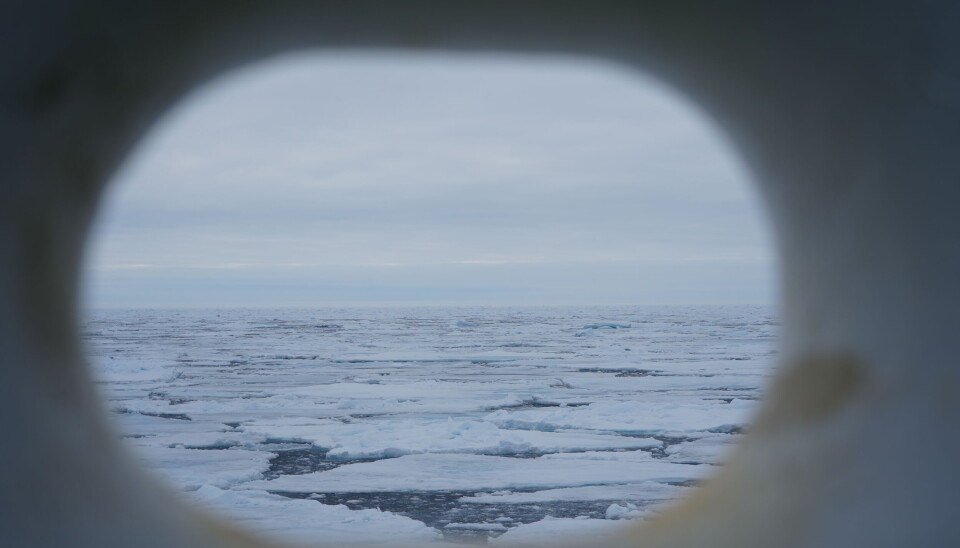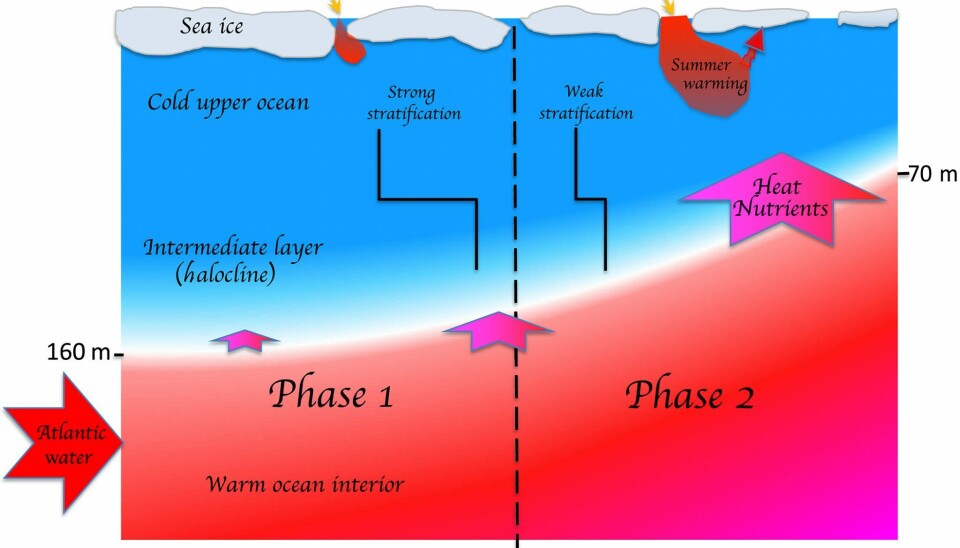
Atlantification ushering in new era of sea ice loss in the Siberian Arctic
Warm Atlantic waters are rapidly reshaping the Siberian Arctic, sparking an era of unprecedented sea ice loss—something that will have ongoing implications for the region’s ecosystem and climate, says new research.
The study, published in the journal Science Advances, found that his process—known as atlantification—is melting sea ice faster than ever before as it pushes further into the Arctic Ocean near Russia.
“The eastern part of the Siberian Arctic Ocean is still strongly stratified, but the atlantification-driven shoaling of warm, salty, and nutrient-rich intermediate waters already has important ecological consequences there,” the authors on the international research team said in the study.
To do the study, the researchers combined mooring data and satellite observations to track ocean temperatures and salinity at different depths. They focused on the warm water coming in from the Atlantic and how much heat it was delivering to—and melting—the sea ice. They also examined how the layers of water in the ocean were shifting and what that meant for ice thickness.
“In particular, we show that the winter ventilation of the halocline in the eastern Eurasian Basin resulted in more than twofold rate in sea-ice loss caused by oceanic heat fluxes as compared to the 2010s,” the paper said.
Phenomenon is accelerating
The movement of warm, salty Atlantic waters into the Arctic has been occurring since the 1970s, but has accelerated in recent decades.
The study found that one key factor driving this acceleration is the weakening barrier between the ice-covered surface of the Arctic Ocean and the warmer ocean waters below.
As the sea ice continues to thin, it makes it easier for these warmer waters to flow deeper into the ocean, speeding up the melting process.

“The powerful ocean-heat/ice-albedo feedback mechanism is the primary cause of these changes,” the researchers said.
“Deep ventilation and weak stratification increase upward [Atlantic Water] heat fluxes, which promotes the wintertime suppression of sea-ice formation and subsequent more effective summertime reduction of sea ice by an ice-albedo feedback.
“This complex process was the key to establishing the diminished sea-ice cover in the Siberian Arctic in recent years.”
Researchers say further studies are needed to better understand the full scope of these changes and their implications. Tracking how ocean waters, ice, and ecosystems continue to change will help scientists predict future shifts and shape climate policies, they said.
“The eastern part of the Siberian Arctic Ocean is still strongly stratified, but the atlantification-driven shoaling of warm, salty, and nutrient-rich intermediate waters already has important ecological consequences there,” the study said.
“Disentangling the role of atlantification in multiple and complex high-latitude changes should be a priority in future modeling and observational efforts.”
---------------
This story is posted on the Barents Observer as part of Eye on the Arctic, a collaborative partnership between public and private circumpolar media organizations.














